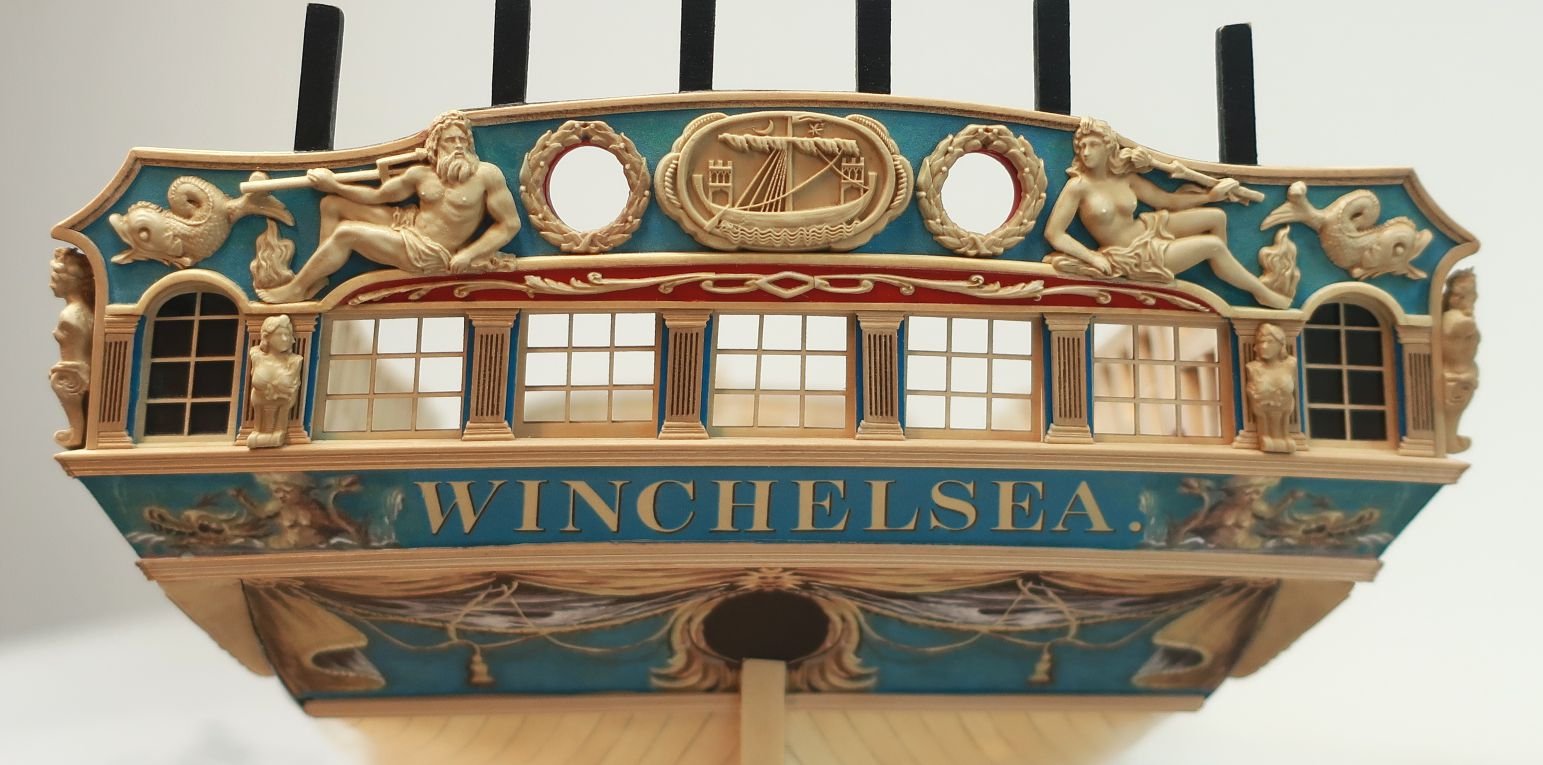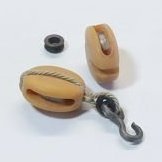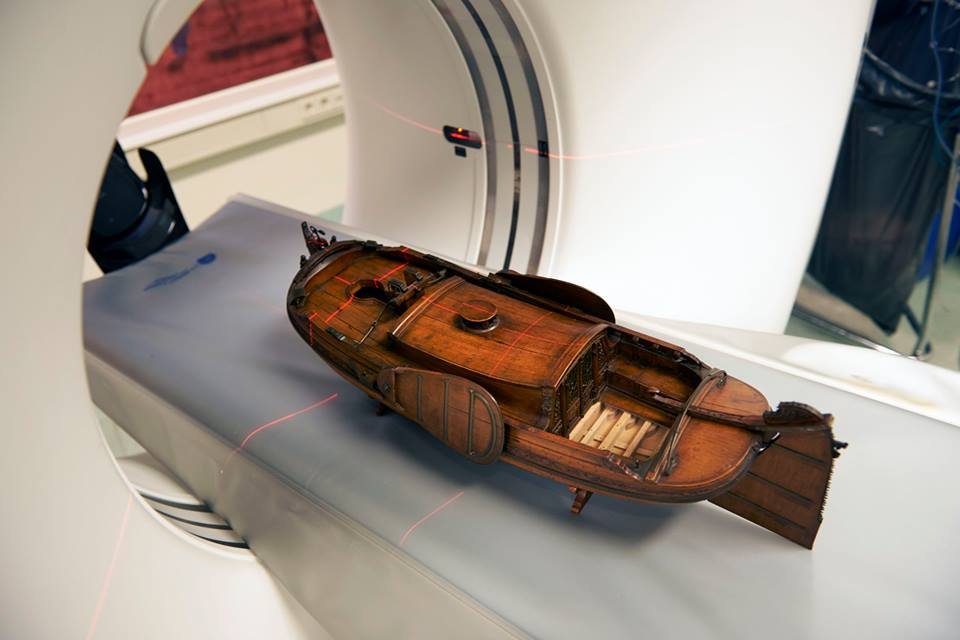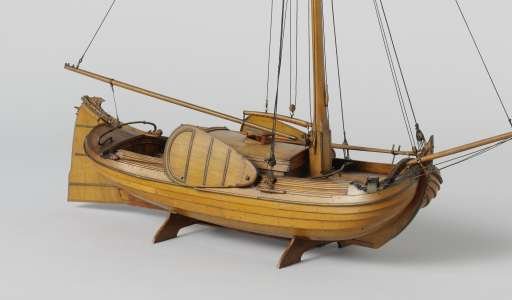-
Posts
9,449 -
Joined
-
Last visited
Content Type
Profiles
Forums
Gallery
Events
Everything posted by Chuck
-
I just order more materials, gears and hubs and things to make more. As soon as they arrive I will make more. Chuck
- 22 replies
-
- ropewalk
- rope rocket
-
(and 1 more)
Tagged with:
-
No...I used to dye the rope and use DMC like everyone else. But I stopped doing that really quick. Now I get all of my thread from Ireland. I have it custom dyed in large batches. Its a commercial source. There are plenty of custom thread making companies out there but you need to order a whole heck of a lot with each batch. Its much more expensive than just buying a ball of thread off the rack. Its my closely held secret as it gives me the edge over other scale model rope makers. When they dye rope...like I did way back when, its tough to get consistent results. Although every batch I get might vary slightly in color, it is much better to do it this way. Saves a whole a bunch of time too. Chuck
- 22 replies
-
- ropewalk
- rope rocket
-
(and 1 more)
Tagged with:
-
Thank You Toni. Left hand isnt any harder. Just leave yourself enough room on the edge of the table when you twist the three individual strands on the headstock. You will be unravelling that thread and then twisting it back up tightly again. So you will be walking the headstock in both directions across the table. Chuck
- 22 replies
-
- ropewalk
- rope rocket
-
(and 1 more)
Tagged with:
-
Thats just as good for me....but really, its kinda fun if you dont have to make 5,000 feet per week. Chuck
- 22 replies
-
- ropewalk
- rope rocket
-
(and 1 more)
Tagged with:
-
Just uploaded the two part video tutorial on how to make rope using the Syren Rope Rocket. I know I am from New Joysee. So no cracks about the accent!!! Exit 15W. Its hard enough talking to yourself when you are making these videos. Because actually making a length of rope only takes 5 minutes....I tried to stretch it. Let me know if you guys have any questions. https://www.syrenshipmodelcompany.com/ropewalk.php
- 22 replies
-
- ropewalk
- rope rocket
-
(and 1 more)
Tagged with:
-
Winnie is underway....I am however having second thoughts about a book and am contemplating doing the same for Winnie that I have done with Cheerful. Just posting the manual/monograph as a free download while selling the starter kit and mini-kits for the model. Seems like the best way to move forward. Easier for all involved. Unfortunately it is a little more complicated than that. But I have time to work out those details. But right now I only have to worry about having fun building her.
-
Bob Not at all. You must have missed my original post. But to recap, Winnie is currently under construction. The plans are basically done except for tweaks as I build her. So while getting my hands dirty on Winnie, I like to also start drafting and designing my next project. I get some computer time in while not in the workshop building the Winnie. These three projects are on my to-do list and I am trying to establish the most commercially interesting one based on our members feedback...or possibly disqualify one if there was no interest. There seems to be interest in all three which is great. And I will start with teh cross section. Chuck
-
That is Dan's baby....as soon as he finishes up what he is working on, I am hoping he will get right back to it. I am in no rush and I certainly dont wont him to rush. Basically I laser cut the parts he draws up after we talk about the design and he continues to build his prototype. Kind of nice actually to have someone else creating a Syren project. But whenever he gets back to it I am sure he will start a build log. Chuck
-
Lookin good. You framed up the entire barge very quickly, I hope you are having fun with it and find it interesting to build.
- 74 replies
-
- queen anne barge
- Syren Ship Model Company
-
(and 1 more)
Tagged with:
-
On a separate note. My store will be opening hopefully again. Just wanted to give everyone a heads up. Grandma is coming home from the hospital today. I am shooting for tomorrow to re-open the store but depending on how things go once she comes home....at the latest it will be early Thursday morning. Thank you all for your patience. I learned from the last time that this was the best way to handle the situation and closing down for a few days was what enabled me to keep my sanity throughout it all. I will get organized and see what I have to start making tomorrow as I know my inventory must be a wreck. Havent stepped into the shop much since last week. So if you see a lot of stuff out of stock....I am going to get right on it. But it will take some time to catch up once I get the sweatshop up and running again. Thanks again Chuck
-
I would like to keep the poll going but allow me to explain why I started this a bit more in detail. I appreciate the responses very much. They were indeed extremely helpful. Like many you who have several kits in the closet and pretty much know what you will be building in the future, I have known for a while that three subjects are what was in my closet so-to-speak. Regardless of how commercially viable any of these were, I was pretty sure that these were projects I was going to build. The real purpose of the poll was to help establish the order in which I was going to develop and build them. Should any of the choices I was excited about been duds with absolutely no interest from the ship model community, I would have still built it. I would have just left it for later and not commercialized it. I am happy to say that it looks like there is sufficient interest in all three. That is good for me. And based on the results, it looks like the cross section is the most popular commercially. Since my current kit/products fund the next projects on my list to bring to market, it makes sense for me to start there. So I am talking with Greg Herbert and David Antscherl right now so I can started on developing the plans for the cross section. I will do so as I build the prototype for the Winchelsea. But yes the Boeier and Chebacco will be brought to market as well. I will just be starting with the cross section. I am so happy that there is actually interest in the later two. Thanks and keep the votes coming as right now it looks like the boeier and chebacco are neck and neck for the number two slot. Chuck
-
Chocks and all. I have since refined this design concept even further. But you get the idea. A few guys from my club came to my shop and I put them to work testing out the concept by having them build up several frames each. Mike was one of them. I would guess that within a couple of hours they collectively built 15 - 20 frames.....while we talked about the process and I was given even more great feedback. I have since built an entire frame with chocks in about 10 minutes with no need to build it on top of a plan sheet. They come out a perfect match to the plan every time. I set my goal to develop a design where someone could be able to fully frame a cross section in just a day or two this way. I am thankful for the guys who helped me with this. If I remember correctly this was a Speedwell frame used for the testing. Thank You Greg and David
-
To clarify.....on scale. I would build the boeier at 1/4" rather than 1/2"scale. That isnt an issue. I can easily do that. I will update the scales and wood choices in the poll if that will help. The Boeier would be in Cherry most likely. The other two would also be in Cherry but have a Boxwood upgrade. Chuck
-
I have always known them by the name chebacco....similar to a pinky. Here is a contemporary model of the Lion from the smithsonian. And a Ronnberg model that is in Mystic. Other than these few examples.....not many models of her or other chebaccos are modeled. There is a fellow building an actual full sized representation of the LIon ....he is making great progress.
-
Hello folks, I am just about finished cutting the new bulkheads and keel parts for Winchelsea. The plans are basically completed other than minor tweaking as a I build her. I am excited and eager to start making sawdust on her any day now. Having said that, because the plans are basically done I like to begin drafting my next project as I build the one on my workbench. I have read through the topics we created about what types of kits and projects might be of interest to folks. I started with 12 possibilities and narrowed it down to 6 and then finally down to just three. Because the Winnie is so large I am looking for a smallish project to research/design/draft. Much like the Barge. Which is all done now. So I would like to ask you to help me out here. For all I know, there may be little interest in either of these. So please just dont start suggesting new choices as I want to concentrate on these three. To help me eliminate them from consideration. Should none interest you than select that as your option and I will continue to look for another subject. A - Dutch Boeier, I have been fascinated by these little subjects and to my knowledge no decent kits or projects exist of one. At least not like I would attempt to create one. No Guns but very beautiful and decorative. This is the exact Boeier I am contemplating. 1/4" scale in Cherry most likely B. Pegasus Cross section...you guys know this one. 1/4" scale in Cherry and also second option for Boxwood upgrade. In cooperation with Admiralty models I would prepare a cross section kit for Pegasus. Not because I am hung up on guns or English ships, but because I really want to try my new method for making frames. I am also excited about working with those guys and think my design features will make it incredibly easy for someone to build a fully framed cross section in a fraction of the time that it would take from scratch...or even with one of the new shady cross section kits on the market. C. Chebacco Boat Lion...early american late 18th century ...POB model of another rarely seen subject that I find interesting. New England fishing Chebacco. 1/4" scale in Cherry with Boxwood upgrade available. D. You are not interested in any of them.....I shouldnt waste a year or so designing a kit of any of these because you are certain that you would not buy them. Dont feel bad choosing this. Helping me to eliminate a project that nobody wants will save me years of wasted time. FEEL FREE TO ELABORATE ON WHY YOU CHOSE ONE OF THE THREE OR NONE OF THEM....its very helpful to me.
-
Looks good Ben... Nicely done. Be careful to make sure that the frames are facing the correct way. Its tricky because they are upside down. I think you might have one or two facing the wrong direction in the photo. They switch direction at frame "0". One "0" frame faces one direction and the other "0" frame starts all of them going the other direction. Check your forward "0" frame and your forward "A" frame.
- 74 replies
-
- queen anne barge
- Syren Ship Model Company
-
(and 1 more)
Tagged with:
-
Beautiful start Ben. Everything looks perfect. Enjoy the project.
- 74 replies
-
- queen anne barge
- Syren Ship Model Company
-
(and 1 more)
Tagged with:
About us
Modelshipworld - Advancing Ship Modeling through Research
SSL Secured
Your security is important for us so this Website is SSL-Secured
NRG Mailing Address
Nautical Research Guild
237 South Lincoln Street
Westmont IL, 60559-1917
Model Ship World ® and the MSW logo are Registered Trademarks, and belong to the Nautical Research Guild (United States Patent and Trademark Office: No. 6,929,264 & No. 6,929,274, registered Dec. 20, 2022)
Helpful Links
About the NRG
If you enjoy building ship models that are historically accurate as well as beautiful, then The Nautical Research Guild (NRG) is just right for you.
The Guild is a non-profit educational organization whose mission is to “Advance Ship Modeling Through Research”. We provide support to our members in their efforts to raise the quality of their model ships.
The Nautical Research Guild has published our world-renowned quarterly magazine, The Nautical Research Journal, since 1955. The pages of the Journal are full of articles by accomplished ship modelers who show you how they create those exquisite details on their models, and by maritime historians who show you the correct details to build. The Journal is available in both print and digital editions. Go to the NRG web site (www.thenrg.org) to download a complimentary digital copy of the Journal. The NRG also publishes plan sets, books and compilations of back issues of the Journal and the former Ships in Scale and Model Ship Builder magazines.








